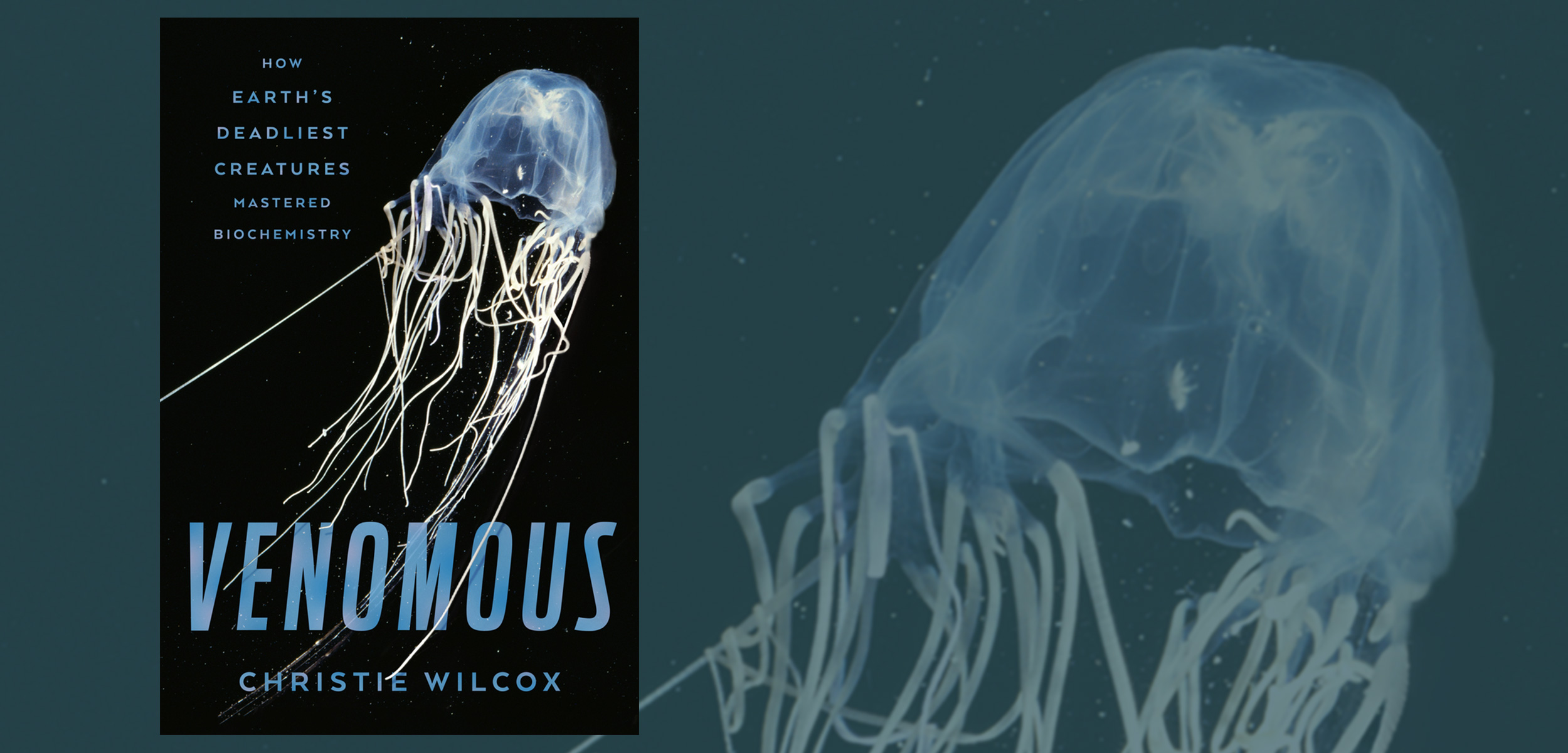Book Review: Venomous
Sea creatures of our nightmares come alive in a biologist’s exploration of the power of their poison.
Article body copy
Anyone who has ever spoken with a field scientist knows that it’s hard to find someone who possesses more captivating stories or tells them with greater passion. After all, the profession requires persistent curiosity, and the pursuit of answers leads down thrilling, occasionally terrifying, and time-consuming paths, where fascination, fun, failure, and even fatal danger may lie in wait. It’s no wonder, then, that scientists are such great storytellers.
Writer Christie Wilcox, herself a scientist, knows this, and the numerous scientists whose stories she shares in Venomous: How Earth’s Deadliest Creatures Mastered Biochemistry are proof. Whether she’s learning about the venomous spurs of the platypus from the head mammal keeper of Lone Pine Koala Sanctuary in Australia, recounting the envenomation of Angel Yanagihara by a swarm of box jellyfish in Hawai‘i, or talking with Baldomero Olivera, a cone snail researcher whose team discovered what would become the first US Food and Drug Administration-approved drug derived from the venom of this potentially lethal species, Wilcox takes a deep and obvious pleasure in sharing other researchers’ discoveries and, above all, considering what their findings mean within the bigger picture of venom studies. The short answer: a lot. Venom researchers are making critical contributions in a variety of fields, especially in the treatment of conditions and diseases as diverse as erectile dysfunction and diabetes. It’s hard not to share her enthusiasm since it’s so palpable on the pages of Venomous.
The stories Wilcox shares take her from Australia to the Amazon, and plenty of points in between, over land and under water. It is in the ocean where she is especially at home; after all, her own research specialty is the beautiful but venomous lionfish, a species that’s proliferating and, as an invasive, is destroying reef biodiversity in areas such as the Caribbean. “I decided to work on venomous fishes,” Wilcox writes, “because so little is known about venom evolution in these fascinating species.” One wishes, however, that she would spend more time taking the reader under water with her. The deep dive into her own work is all too brief, leaving this reader, at least, wanting more.
Perhaps that will come in a sequel. As Wilcox writes at the end of Venomous, there is still so much to learn about venomous species. And if, as she says, “Every species on this planet tells a story, an evolutionary novel packed with generations upon generations of knowledge,” then there’s plenty more for Wilcox to write about with her characteristic passion, inspiring readers to invest intellectually and emotionally in the subject to which she has devoted her career.
Venomous: How Earth’s Deadliest Creatures Mastered Biochemistry
By Christie Wilcox
232 pp. Scientific American/Farrar, Straus and Giroux

